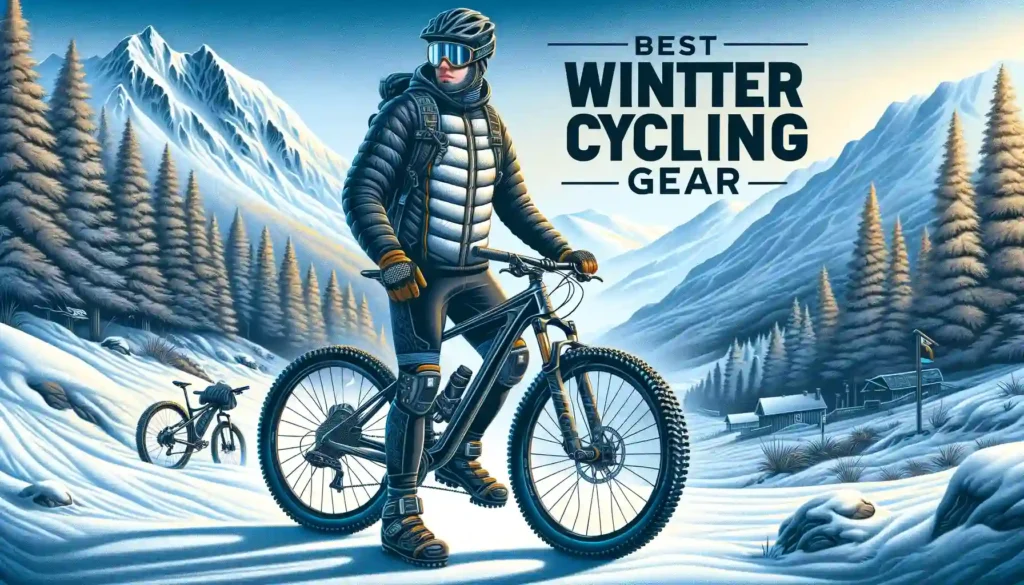
Winter cycling can be an exhilarating yet challenging experience. Frigid temperatures, slippery roads, and reduced daylight make it important to have the proper gear to stay comfortable, visible, and safe. Using a layering system and investing in key winter-specific cycling clothing and equipment will allow you to continue riding even when the mercury plummets.
Layering System
A layering system is crucial for adapting to changing winter conditions while riding. Follow this 3-layer approach:
Base Layer
This is the layer closest to your skin. Opt for a form-fitting, moisture-wicking fabric to keep sweat off your skin. Merino wool or synthetic fabrics work well.
Insulation Layer
The mid layer provides warmth by trapping body heat. Fleece and down are common insulators. Ventilating zippers allow you to adjust temperature.
Outer Shell Layer
The outermost layer shields you from the elements like wind and rain. Waterproof-breathable fabrics are best to prevent moisture buildup. Look for taped seams and zipper garages.
Essential Winter Cycling Clothing
Certain winter-specific cycling gear is non-negotiable for safe, enjoyable cold-weather rides:
Winter Cycling Jackets
Your top layer needs wind and water resistance with insulation. Look for adjustable cuffs, a high collar, and useful pockets.
Winter Cycling Pants
Tights or padded bike pants add crucial leg coverage and warmth. Opt for ankle zips for easy on/off over shoes and reflective elements for visibility.
Winter Cycling Gloves
Protect your fingers from frost, wind, and vibration with well-insulated full-finger bike gloves. Lobster cycling gloves keep fingers in pairs for extra warmth.
Winter Cycling Socks
Wool socks help wick moisture and provide insulation. Some cyclists wear vapor barrier socks inside waterproof outer socks for extreme conditions.
See also: Winter Cycling Clothes
Winter Cycling Shoes
Insulated cycling shoes with water-resistant outer fabric and lugged soles to prevent slipping on ice or snow are a smart choice. Covers stretch over normal cycling shoes as a budget option.
Winter Cycling Hats/Headbands
A substantial portion of body heat is lost through your head so always wear something under your helmet. Opt for wool, fleece, or wind-stopping fabrics.
Other Important Winter Cycling Gear
Beyond the basics, a few extra items really take winter riding to the next level:
Balaclava/Neck Gaiter
Protect all exposed skin from frigid winds. Look for moisture-wicking fabric to avoid wet skin in subzero temperatures.
Booties
Neoprene shoe covers with sturdy soles shield feet and ankles from cold and wet. They easily slide over cycling shoes.
Eyewear
Shield eyes from glare, wind, and precipitation with weatherproof cycling glasses. Look for ventilation to prevent lenses fogging up.
See also: 18 Helpful Winter Riding Tips
Bike Lights
Reduced daylight makes lights mandatory for safety. Invest in rechargeable front and rear LED lights for maximum visibility in gloom or storms.
Winter Bike Maintenance
Adjust some regular bike maintenance practices for the off-season:
Lubrication
Clean and lube the chain more frequently to counter road salt, grime, and excess moisture which accelerates wear.
Washing
Rinse road salt and grime off your bike after every ride to prevent corrosion and keep moving parts functioning properly.
Riding Safety Tips for Winter
Be Visible
Wear bright colors, use lights, and add reflective details so motorists and other cyclists can see you in low light.
Check the Weather
Dress for the coldest potential temperature, not just the high. Check forecasts for precipitation before heading out.
See also: Choosing the Right Gear for Every Weather Condition
Mind the Road Conditions
Watch for ice, snow, wet leaves, gravel, and other slippery hazards on the road, especially on turns and descent.
Conclusion
With proper layering, winter-specific clothing, and cold-weather gear, you can comfortably continue cycling all season. Pay special attention to maintenance and safety issues like visibility and road conditions during the colder months. Investing in quality winter gear will keep you riding reliably for years to come.
Now get out and enjoy winter! Just dress warmly and be prepared.
FAQs
What are some budget-friendly tips for winter cycling?
You can cover normal shoes with waterproof socks and bread bags. Sweatpants work as improvised leg covering. Wear bright clothes you already own over base layers. Plastic bags over your socks act as makeshift booties.
Can you ride safely when roads are snowy or icy?
It’s very challenging and risky. Use studded bike tires for additional traction on ice. Avoid riding in heavy snow or on unplowed roads. Exercise extreme caution by slowing way down.
What is the coldest temperature people can safely cycle in?
It depends on the wind, your gear, and length outside. With excellent gear, very fit cyclists can ride an hour or less in temperatures down nearing -20°F (-29°C) if properly layered up. Mostly it gets too risky in extreme cold.
How can you see clearly if eyewear fogs up or gets wet?
Quality cycling eyewear features vents to allow moist air to escape so lenses resist fogging. Applying special anti-fog sprays/lotions also helps. Carry a small cloth to wipe moisture away without removing glasses.
Is it safe to use headphones while winter biking?
No, for safety reasons it’s best to avoid blocking external sounds during winter riding. You rely more on hearing to be aware of nearby vehicles in low visibility and need to listen for warning sounds of slippery conditions ahead.


















